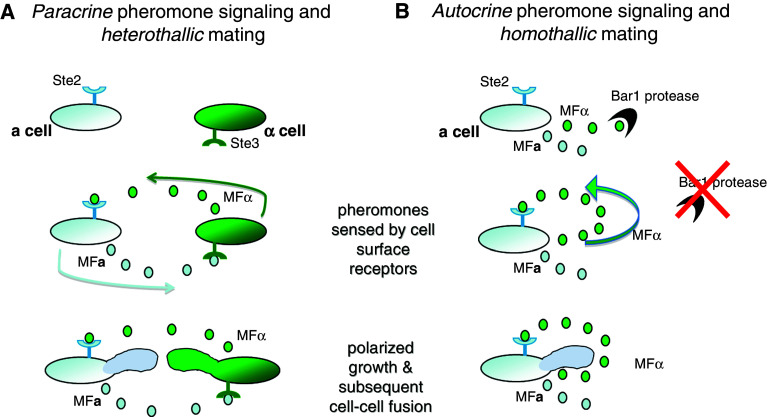Fig. 2.
Heterothallic and homothallic mating in Candida albicans. A Paracrine pheromone signaling drives heterothallic mating in C. albicans. Opaque MTLα cells secrete α pheromone (MFα), which is sensed by the cell surface receptor, Ste2, on MTL a cells. Conversely, opaque MTL a cells secrete a pheromone (MFa), which is sensed by the receptor, Ste3, on MTLα cells. This inter-cellular pheromone signaling results in upregulation of mating genes, induction of polarized growth, and a-α cell fusion. B Autocrine pheromone signaling drives homothallic mating in C. albicans. It is now recognized that opaque MTL a cells secrete not only the canonical MFa pheromone but also MFα pheromone. The Bar1 aspartyl protease degrades MFα, but in the absence of this protease MFα accumulates and binds to the Ste2 receptor, resulting in auto-activation of the mating response. Subsequent same-sex conjugation of C. albicans MTL a cells occurs resulting in formation of tetraploid a cells

